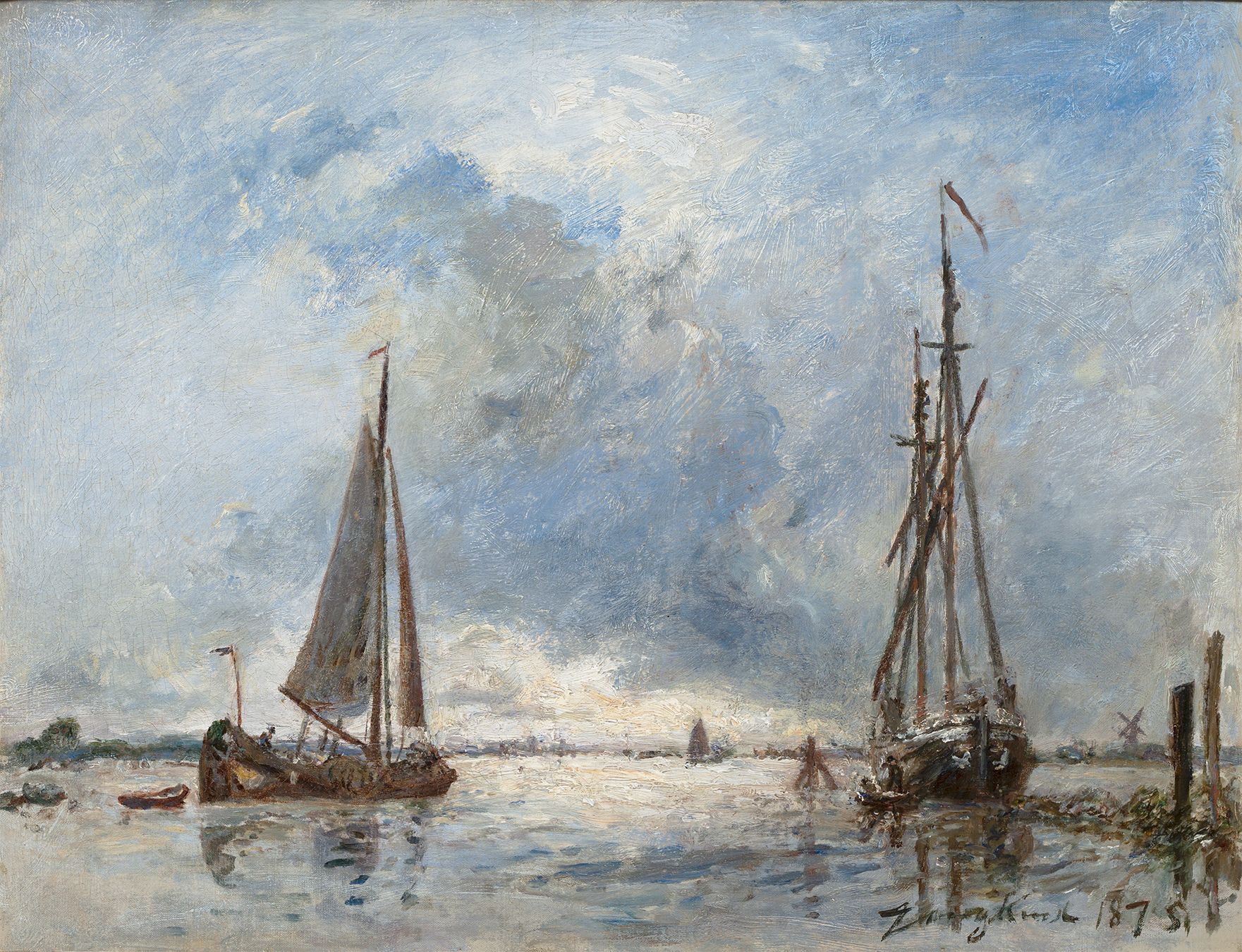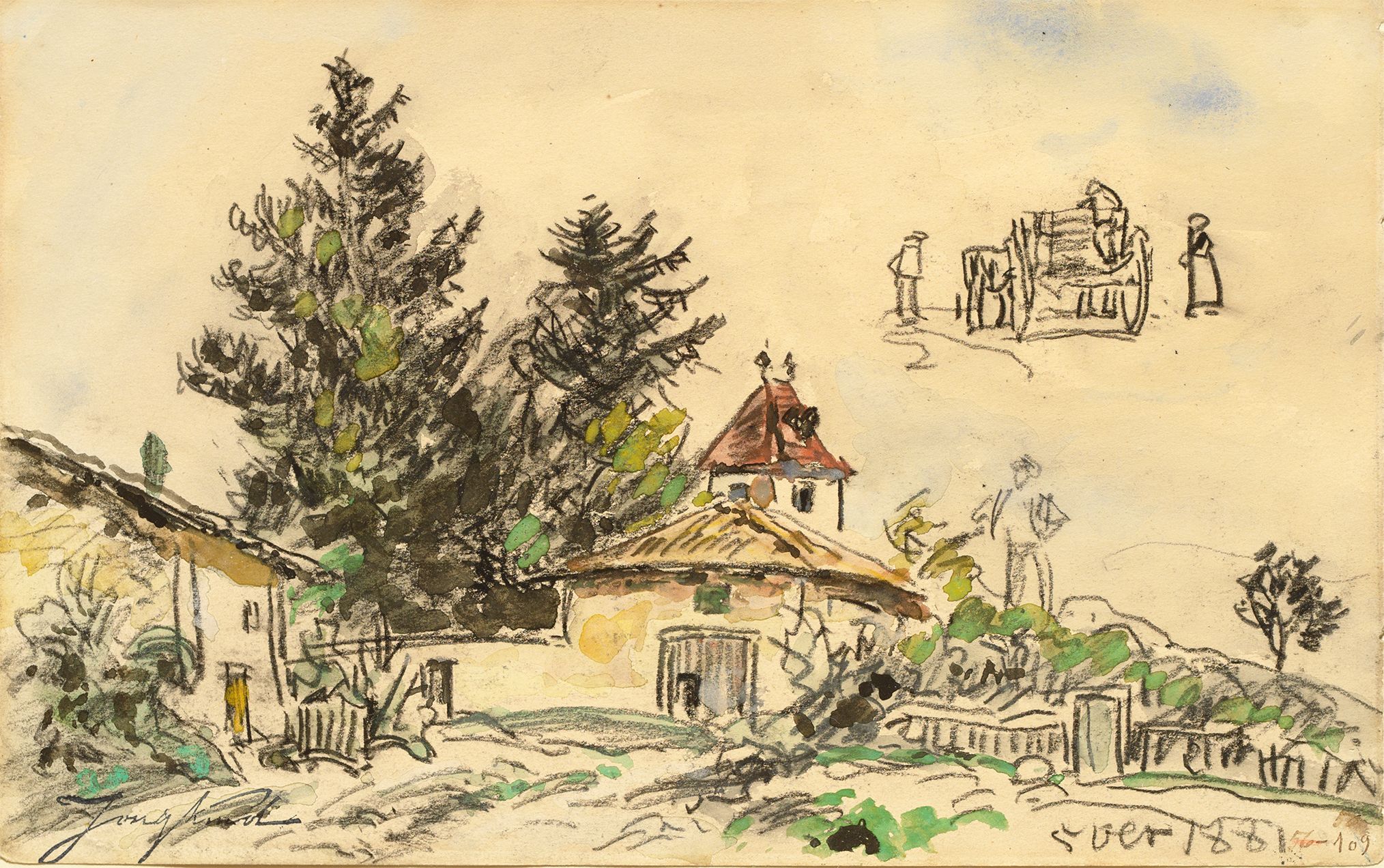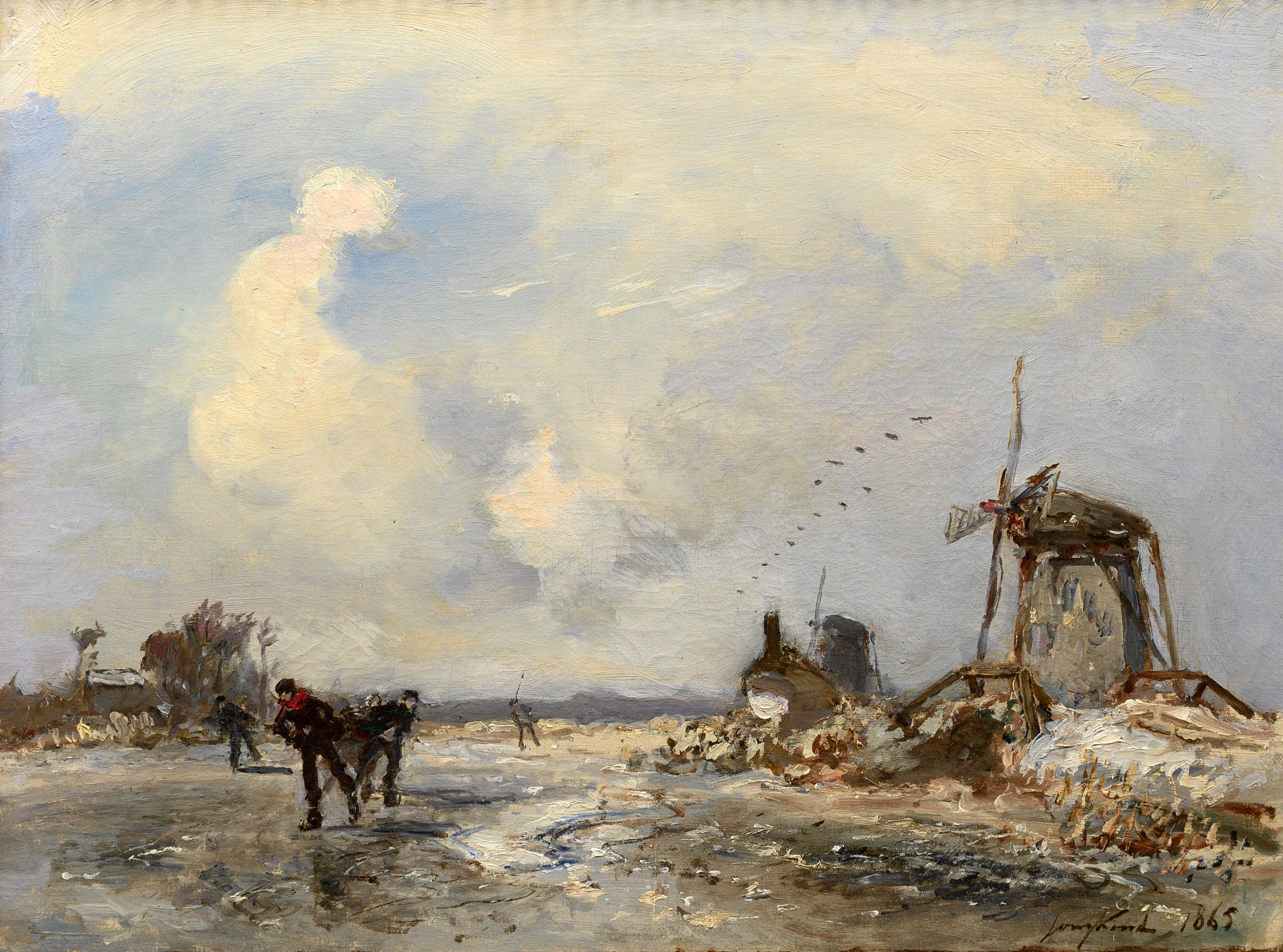J.B. (JOHAN) JONGKIND 1819 Lattrop (The Netherlands) - 1891 Côte St.-André (France) Rivière La Meuse à Rotterdam par Temps de Pluie
Oil / Canvas: 34,4 x 43,3 cm
- This artwork can be viewed in our gallery
- Call us for more information: +31 26 361 1876
- World wide shipping available
Details
The busy port of Rotterdam, reduced to two small ships on an infinite glittering expanse of water. Water and sky, the two main ingredients of Dutch landscape painting, dominate this work of art. The weather is typically Dutch: one of those days where sun and rain alternate. With a virtuoso, swift but accurate technique, Jongkind depicted atmospheric conditions, sunlight through the clouds and reflections on the water. The ever-changing circumstances were a constant challenge and source of inspiration for him. His way of working was hugely influential in France, where he is considered the father of impressionism.
Width: 43,3 cm
Sale Collection of Théophile Bascle, Hôtel Drouot, lot 119, Paris, 12 April - 14 April 1883
Ernest May
Galerie Alfred Daber, Paris, - 1960
Kunsthandel E.J. van Wisselingh & Co, (inv. no. 2963), Amsterdam
Private collection The Netherlands (thence by descent)
Jongkind, Peintures et Aquarelles, Galerie Alfred Daber, Paris, 11 May - 4 June 1960, no. 25
Over J.B. (JOHAN) JONGKIND
Johan Barthold Jongkind began his education as a painter in the studio of the Romantic painter Andreas Schelfhout along with lessons at the Hague Academy. In 1846, with a royal scholarship, he left for France where the French marine painter Eugène Isabey (1803-1886) became his teacher. Together they traveled across France and eventually to the Normandy coast that would play an important role in Jongkind's later work. A few years later he would meet Eugène Boudin and Claude Monet in Honfleur. Jongkind was successful from the start, although he didn't win prizes at the Paris Salons. Suffered with depression and haunted by financial problems, Jongkind returned to the Netherlands in 1855 and settled in Rotterdam, where he led a more quiet life but continued to paint. Among his French artist friends, he had remained popular and they arranged his return to France. He would not return to the Netherlands after 1869. Meeting Joséphine Fesser, with whom he would share the rest of his life, put his life more peaceful. Until today, Jongkind is considered the father of Impressionism. Together with his friend Boudin, he made this genre great. He was very successful especially with his landscapes by moonlight. When we look back and compare the years of the works of the later impressionists who came after him, we can truly speak of a pioneering artist.



